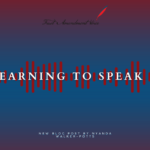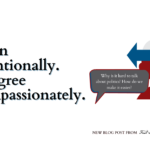
Fear appeals are commonplace in political rhetoric and advertising campaigns, but they can have a damaging effect when enough people are quickly persuaded before taking the opportunity to critically deliberate the validity of these appeals.
Also referred to as “fear-induced persuasion,” fear appeals are designed to convince an audience of an idea with horrifying imagery and dread-filled rhetoric. For instance, you might’ve seen some anti-smoking ads that used fear appeals to convince others to stop smoking by showing graphic images of a long-time smoker’s lungs or letting someone with severe emphysema narrate an anti-smoking commercial.
While fear appeals aren’t always bad (e.g., ads to stop people from drunk driving), they can significantly influence our public discourse, for better or for worse. Let’s explore how this happens through some contemporary examples:
Emotionally Charged Rhetoric
Fear appeals almost always start with emotionally charged rhetoric, which involves words and phrases with unfavorable connotations applied to a target. In political and everyday speech, there are several relevant examples of emotionally-driven rhetoric:
- Referring to welfare recipients as “moochers” or “Welfare queens“
- Referring to immigrants as rapists, animals or criminals
- Calling women who advocate for equal rights among genders “femi-nazis“
- Referring to Syrian refugees as “rapefugees“
And the list goes on and on. The fact of the matter is: it’s important to recognize how emotional language can distort our perceptions of the truth and cause us to react negatively before we even consider all the facts surrounding the individual or group targeted by fear appeals.
Constructing the Enemy
This brings us to the concept of constructing the enemy. Historically, Germany’s Nazi Party offers one of the most recognizable forms of enemy construction, in which a propaganda campaign led to the mass extermination of millions of Jews (who they blamed for poor economic conditions in the country at the time).
In a nutshell, “constructing the enemy” involves extensive rhetorical efforts (using speech, images, “experts,” cherry-picked examples blown out of proportion, propaganda campaigns, etc.) to designate a group of people as an enemy. After 9/11, the uptick in society-wide Islamophobia demonstrated the powerful persuasive appeal of American politicians’ rhetoric about Muslims. Nowadays, the notion that “illegal immigrants are stealing our jobs” is one of the most common examples of fear appeals that is used to justify tighter immigration policies.
How is the First Amendment Involved?
Free speech is one of the essential cores of the First Amendment, but it isn’t 100% unrestricted, according to historical legal precedents. For instance, in the 1969 Supreme Court case, Watts v. United States, it was found that threats must be considered separately from constitutionally protected speech (especially when they’re “true threats,” which may be prosecuted under the law in order to prevent fear, disruptions and violence arising from genuine threats).
A more recent (and complex) example would be that of InfoWars‘ host Alex Jones’ involvement in a lawsuit initiated by parents of Sandy Hook shooting victims, after he claimed the deadly school shooting was a hoax. This is a different kind of fear appeal, in which Jones reduced a real tragedy to a made-up incident, blaming gun control activists for using a fearful “narrative” of children dying in school shootings to get more gun control policies passed in state and federal legislative bodies. In other words, Jones labeling the Sandy Hook massacre as a hoax could be viewed as a fear appeal designed for a pro-2nd Amendment audience.
As we can see, fear appeals are extremely persuasive, both in the US and abroad. Even when they have little to no basis in reality, they can significantly alter public opinions about certain individuals and groups, which could potentially lead to violence against these scapegoated groups. As fervent supporters of constitutional rights for all Americans, we must recognize how fear appeals can subtly change our perceptions of reality and use our First Amendment rights to speak out against fear-based rhetoric that our politicians, media outlets and companies use on a daily basis.






